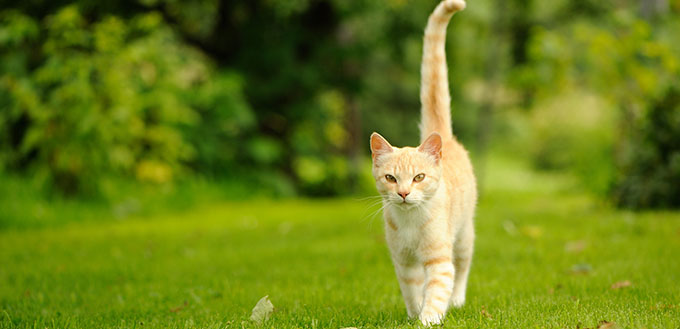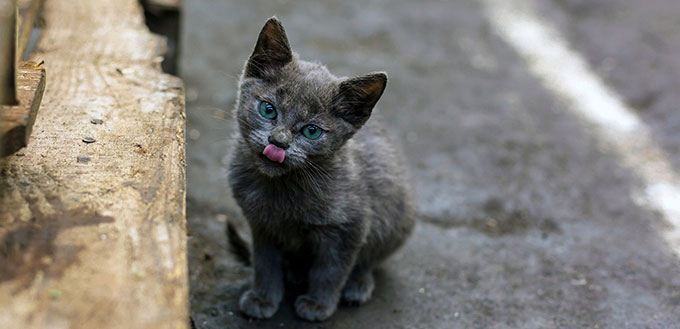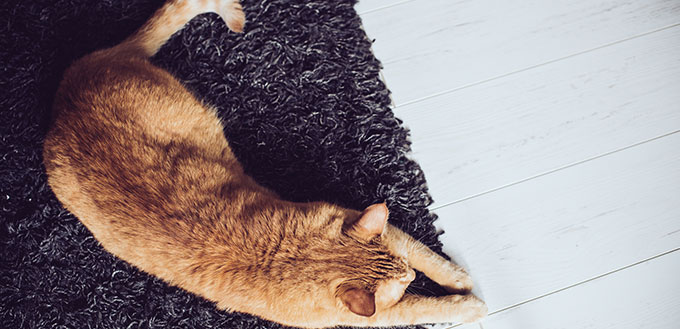Cats are delightfully mysterious- from their aloof personalities to their adorable little ears, there’s a thousand questions us humans have about our feline friends. Yet, one of the biggest points of interest has always been the cats tail. From the thumping twitches of irritation to little kink at the end, as they come over to say hello, the cat’s tail can indicate a thousand moods. Needless to say, it’s important to know what your cat is trying to tell you, in order to figure out what your next steps should be!
One of these tell-tale signs is the vibrating tail of our cats. If you’ve ever noticed your cat’s tail vibrating, it’s understandable you might have a few questions as to what it means. Luckily, you have us to do the research for you. Below we discuss some of the main reasons it’s believed a cat’s tail may vibrate and how it affects your relationship between you and your pet.
Health Reasons
While it’s unlikely to mean that there is anything seriously wrong with your cat, it’s always best to take a look at the context of the environment around your cat, when their tail vibrates. Here’s a list of signs you should look out for, which can indicate a more serious issue behind your cat’s vibrating tail:
- Atrophied muscles
- Loss of appetite
- Weight gain
- Sickness (usually over a period of 2 or more days)
- Twitching all over the body (“twitchy cat syndrome)
- Behavioral changes (increased vocalizations or increased agitation, for example)
These can be symptoms of deeper issues, including issues with the thyroid, nutritional deficiencies and a myriad of skin conditions. If you have noticed any of these symptoms alongside the vibrating tail of your cat (or as standalone symptoms), then please do contact your vet for more advice.
Anxiety
You obviously know your cat best, so you should be able to pin-point the exact cause of anxiety if you notice your pet’s tail having a quick shiver in certain scenarios. A sure-fire sign of an anxious cat can be if their upper tail is quivering. Of course, cats can become easily agitated, depending on their personality type, so there can be a wide range of reasons as to why your cat have suddenly got it’s twitch on. Some of these include:

They’re In An Unknown Area
Cats don’t like to be taken out of their comfort zone. If you’ve moved house, you may notice a shaky tail for the first few days as your feline friend gets their bearings and figures out good hiding spots and sleeping areas.
It’s Noisy
As above, this can make a cat feel uneasy because they don’t know what the source of the sound is. In the same way a dog might bark at an unknown noise, a cat’s tail can vibrate as an indication that they’re preparing themselves for a new experience or are getting themselves ready to attack.
Miscellaneous
As broad as it may sound, it depends entirely on the natural anxiety levels of your cat. Just like us humans, some are more prone to becoming anxious than others. In this case, it could be a lost toy, an empty food bowl or a general irritation as not being comfortable.
How to Help Anxiety in Cats
If you notice your cat is anxious, with a vibrating tail, for an extended period of time, it could be worth investing in some calming treatments, such as the Feliway plug-ins, which have been shown to help calm cats who suffer with heightened anxiety. It can also be worth trying to create more spots for your cat to hide or buy a platform for your cat to sit higher so they can see a larger area.
Take a look at our articles on the Best Calming and Anti-Anxiety Products for Cats and Best Calming Collar for Cats.
Irritation and Restlessness
Some cats don’t like to be around too many people, or other animals, or anything that isn’t expressly put in the right spot with their permission. To summarise: some cats are just grumpy. Without knowing each cat personally, it’s hard to say exactly what can trigger these responses- but they can range from your pet not having enough attention, to your cat having too much attention.
Naturally, these are at least all direct responses to our interactions with them. Thus, we can easily figure out what behavior is causing our kitties to act this way. For example, if you see your cat’s tail twitching and vibrating as you’re playing with it, it could be time to leave your pet well alone. Don’t forget to teach any kids about this rule, as well- prevention is better than a cure and teaching children to respect the boundaries of your pet is a great life-lesson.

Happiness
Now that we’ve got the serious bit out of the way, it’s time to turn out attention to more uplifting things- like the positive behavioral reasons as to why your cat might have a twitchy tail! Here’s a list of reasons as to why you might be picking up good vibrations from your cat.
Food!
Like most of us, cats are total suckers for food. Especially if they’ve gotten into a routine and know what the sounds, time and particular behaviors of the humans are leading to. You’ll have probably noticed if this is the case- all you’ll need to do is head over to their food cupboard or pick up the bag of food and you’ll see the tail start going. This is a good thing! They’re happy that their food is being brought to them and want to show you that they like it.
Related Post: Best Dry Cat Food
A Favorite Human
If you notice your cat’s tail quivering as they come over to greet you then you should take it a very big compliment! This means that they’re really happy to see you and want you to know it- something that most cats aren’t too fussed about sharing with their owners. You obviously take really good care of your kitty and they love you very much, for it.
Feeling Playful
It’s a little contradictory to our earlier point about cats needing a little space, if you catch their tail vibrating while playing. However, as with all things, it’s all about moderation and reading the room. For example, if your cat is having a tail twitch while you’re playing with a laser pen, it could simply be that they’re really happy about having some energy burnt off (or maybe they believe that today is the day they’ll finally catch it).
That said, if you notice the tail fluff up a little, or the tail becomes a much harder “thump” as it vibrates, that can be a clear indication that they’re more annoyed than anything else, and it’s time to give up and settle down.
Excitement
Linked loosely to the others in this list, excitement can come at a moment’s notice for any cats, which can often lead to a vibrating tail. You’re most likely to see this happening when your pet has noticed something small and eye-catching outside, such as a bird or mouse. This will usually be accompanied with some chirping sounds from your cat, as well the intensely focused stare that all cats have nailed. If your cat’s tail is vibrating while these other signs are present, don’t get involved as this can be irritating to your pet- but do feel free to admire their determination!

Other Key Signs to Look For
If you’re still not sure about whether your cat is happy, anxious, annoyed or restless, feel free to check out these other hints and tips that every cat gives away:
Ears
A cat’s ears are equally as expressive as their tails. Ears that are pressed low down could mean your cat is very annoyed, scared or is ready to hunt. Meanwhile, if your cat’s ears are perked up and facing forward, it’s likely they’ve seen something that’s caught their eye. Relaxed ears tend to face a little to the side, which shows that are feeling rather neutral toward the situation.
Related Post: Best Cat Ear Cleaners
Eyes
If your cat is staring intensely, it’s likely that they are about to pounce on something and that their tail is vibrating due to their intense concentration on an animal, toy or your hands (if you’re unlucky!). A cat that closes it’s eyes around you means that they’re very relaxed and content- some believe that a slow blink is a cat’s way of saying “I love you”!
Stance
A cat that is relaxed will usually have a tail to match. For example, a straight-up tail is usually accompanied by a friendly stroll, as they come over to say hello. On the other end of the spectrum, a cat that is frightened or very annoyed will often “fluff up” to make themselves appear bigger than they actually are. They are also likely to turn sideways on to the perceive threat, which allows them to either fight or run away from the problem, at any moment.
Sources:
- Naomi Millburn, What Does It Mean When Your Cats Tail Vibrates or Shakes?, The Nest
- Alison Gerken, DVM, How to Read Your Cat’s Tail Language, PetMD
Note: The advice provided in this post is intended for informational purposes and does not constitute medical advice regarding pets. For an accurate diagnosis of your pet's condition, please make an appointment with your vet.







